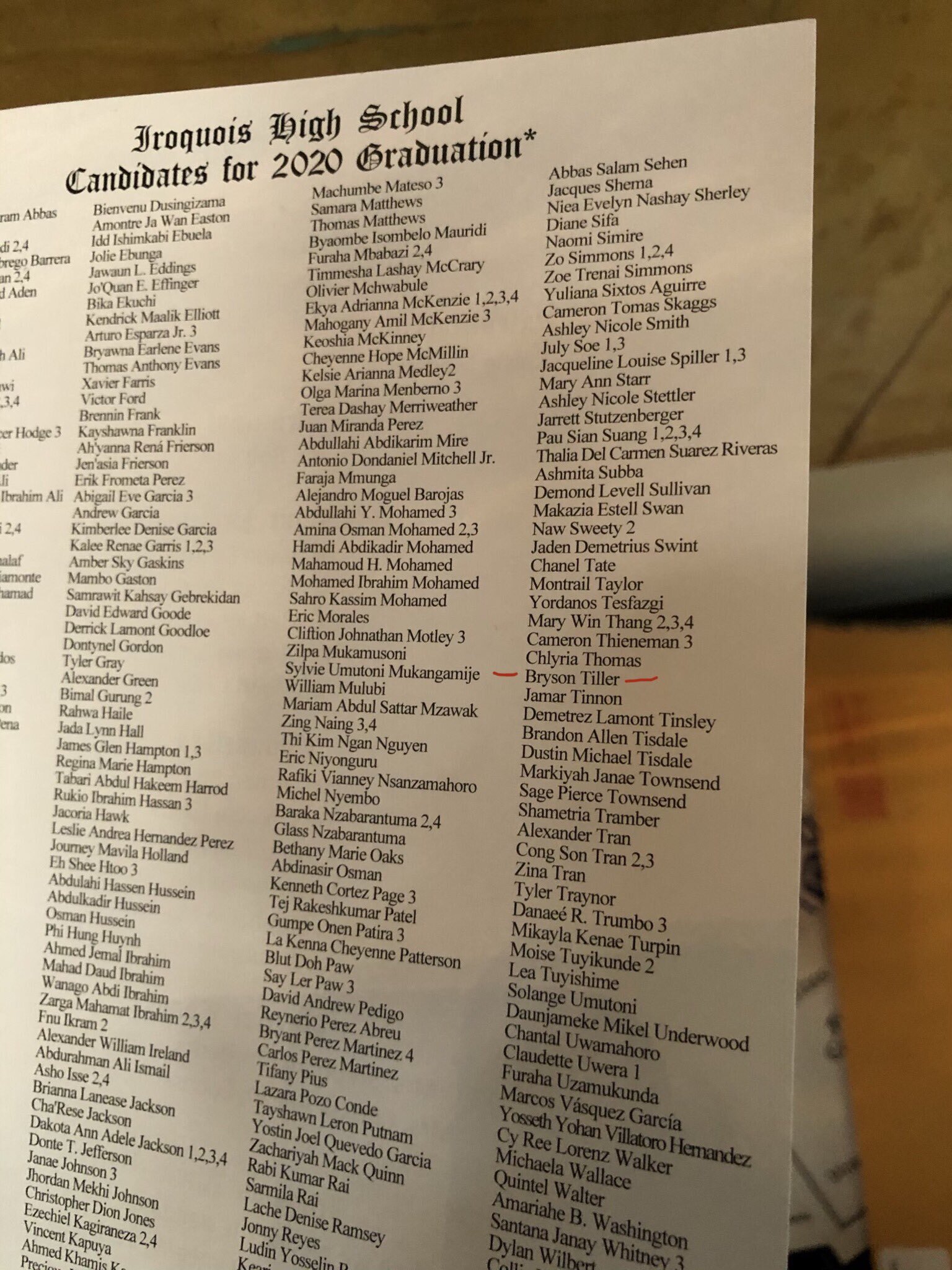IMPROVING THE HIGH SCHOOL GRADUATION RATE FOR BLACK MALES
This weekend, American recording artist Bryson Tiller took to Twitter to share his pride in receiving his diploma from Iroquois High School in Louisville, Ky. He shared with fans, “I never thought about going back to school until I started thinking about my goals and how to reach them”.
Earlier last month, rapper Quavo from the group Migos also celebrated his graduation via Instagram, stating, “Finally Can Say I Graduated High School Class Of 2020. We Lit”.
Both men expressed interest in attending college.
Much of what I’d like to uncover in the “Building a King” series, is a set of strategies we can use to ensure that the young men in our communities are living up to their highest potential. It is important to underscore how significant a gesture it was for Bryson and Quavo to share both their journey to graduation, and their interest in post-secondary education. Many an educator of Black students can tell you the impression that recording artists, athletes, social media figures, and other entertainers can make. Many young men across our nation choose to forgo formal education in secondary school for hopes of fame and fortune in the music industry. Several studies inform us of the value of a high school diploma - especially as a young Black male - as a means of self-sufficiency, or as our elders like to call it, “Plan B”.
Truthfully, a great deal of our boys have lost interest in education. This typically starts as early as elementary school; some researchers indicate that by grade 7, students have made a decision about leaving school altogether. How should schools be responding?
In a paper published in the February 2020 edition of Principal Leadership entitled “Role Call: Culturally Proficient Leadership”, authors Marck E. Abraham and Marie Cianca outline five key strategies “that pave the way for success among back males”.
They interviewed a series of high school principals whose schools boast graduation rates of 80 to 90 percent for black males. Currently, the national rate of high school graduation for Black males is 59 percent; it is much lower in cities like Baltimore, Philadelphia, New York and Chicago.
According to Abraham and Cianca, when these five strategies are implemented, they have a positive impact on the graduation rate of Black males. They include:
Assess the Culture. Teachers are encouraged to build strong relationships with students. School leaders are encouraged to respond to the needs of parents, students and the community at large through data collection, analysis, strategy and execution.
Value Diversity. A community should be cultivated where Black males feel they have a voice.
Manage the Dynamics of Difference. Everyone should be working towards cultural competency. Principals should strive to create harmony in their schools in spite of cultural differences.
Adapt to Diversity. School policies should not punish students for their cultural identity. Professionals in the building can share culturally responsive techniques among themselves and put them in practice. Ongoing professional development is key.
Institutionalize cultural knowledge. Leaders should make it their mission to listen to students from all cultures, and promote the celebration of everyone. Does your school curriculum have a Eurocentric tone? Review and revise. Contact local colleges and universities; build bridges for students to have access and exposure to these institutions. Students should not feel forced to “code switch”. Rather, they should be welcomed and affirmed by everyone in the school.
(@brysontiller) Twitter. 2020.
Graduation photographs of Quavo (@QuavoHuncho). May 2020. Instagram.
Abraham, M. E., & Cianca, M. (2020). Culturally Proficient Leadership: Improving the high school graduation rate for black males. Principal Leadership, 20, 10.


